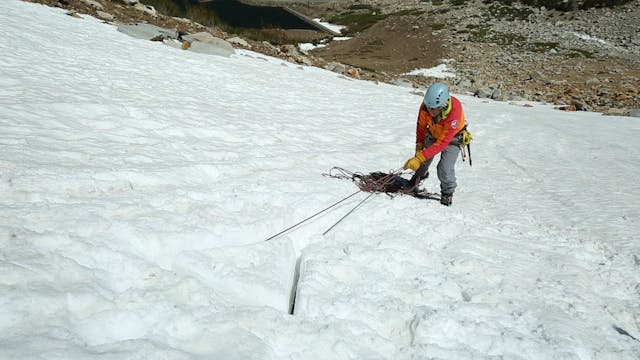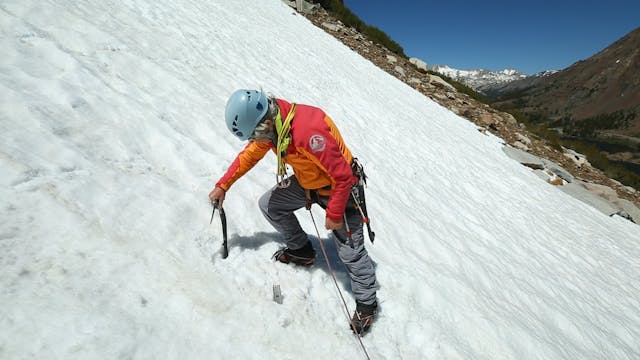Alpine: 12. How to Glissade
Alpine & Mountaineering
•
2m 13s
In this video we look at proper glissading technique. This is a fancy term for sliding down the snow; either standing or seated. Glissading can be a fun and quick way to descend snow. It can also create a dangerous situation, and has been the cause of numerous accidents.
A few considerations to keep in mind when glissading:
1. Glissading should only be done in snow that is soft enough and low enough angle that a self arrest is possible. For more on self arrest see our video on “The Self Arrest”.
2. Glissading should never be done while wearing crampons, and should always have a clean runout, meaning that if the glissade ended poorly and out of control, the climber would not end up splattering on a pile of rocks or at the bottom of a large crevasse.
3. Glissading can be done either standing or sitting.
Seated glissade - involves sliding on your butt, with feet out in front, possibly with heels dug into the snow to help steer and control speed.
The ice axe is held on one side of your body. Drive the spike into the snow, and bring the opposite hand (holding the head) across you body. In this way you can leverage the axe, and use it both as a rudder, as well as a brake.
If you get going too fast, or lose control, return the head to the other shoulder and roll toward the pick, in order to get into self arrest position as swiftly as possible.
Standing glissade - requires a little more balance and skill, but has the significant advantage that you will not end up wet from sliding on snow, nor wear out the butt of your pants.
This technique is also referred to as boot skiing, and can be really fun. With the standing glissade, the ice axe is held to the side of the body in the self arrest position. Notice how the video shows the climber with both hands on the axe. Some would argue that ideally the axe would be in only one hand. One-handed is potentially better for balance, and reduces the chances of getting the adze in your face if you stumble or hit a bump.
Standing glissade or boot skiing might look cool but the downside is that if the standing glissade becomes out of control, it can get ugly. The higher from the ground you are, the harder you fall.
We hope you found this video helpful. Feel free to comment below with questions or thoughts!
Please remember, climbing is inherently dangerous. Climb at your own risk.
Up Next in Alpine & Mountaineering
-
Alpine: 13. Snow Anchors - Creating a...
In this video we build a snow bollard. This is a type of snow anchor that can be used for rappelling when you have no other anchor options. They are also great because you simply use the snow and your rope, and leave nothing behind.
Bollards can be time consuming to build and finicky to perfec...
-
Alpine: 14. Snow Anchors - Equalization
In this video we look at how to equalize snow anchors.
Building snow anchors follows many of the same principles as building rock anchors. The force placed on snow anchors tends to be less than on rock. The exception to this would be haul systems for crevasse rescue.
When building anchors ...
-
Alpine: 15. Snow Anchors - Using your...
In this video we take a look at anchors using an ice axe. An ice axe can be used as an effective snow anchor, in a couple different ways.
Vertical Anchor - The first method involves pushing or driving the shaft down into the snow, to create a vertical anchor. The best orientation is to drive ...


